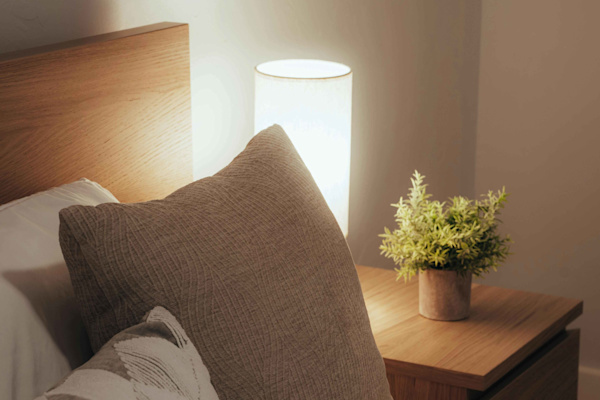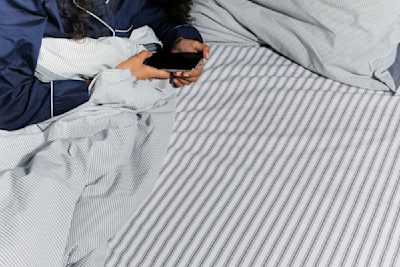
How light temperature affects melatonin production
The Power of Light
If you've ever found yourself tossing and turning in bed, unable to drift off into dreamland, you're not alone. We all know that getting enough sleep is essential for our health and well-being, but sometimes, achieving a good night's sleep can feel like an uphill battle. While there are many factors which affect sleep quality, one often-overlooked aspect is the role of light temperature.
Did you know that the type of light you're exposed to can significantly impact your body's production of melatonin, the hormone that regulates your sleep-wake cycle?
In this article, we'll dive deep into the fascinating world of light temperature and its effects on melatonin production. If you're curious about how to get a better night's sleep by harnessing the power of light, read on.
Light temperature plays a crucial role in the production of melatonin, which is the hormone responsible for regulating our natural sleep-wake cycle. This hormone is produced in response to light exposure, and its production is heavily influenced by the type of light that we are exposed to. Consequently, it’s important to understand the role light temperature plays in melatonin production, so that one can better regulate our circadian rhythm. By understanding the ways in which light temperature can affect melatonin production, we can better understand the impact that light has on our body and how to make the most of it.[1] [2]
What is melatonin and its role in regulating sleep-wake cycle
Our bodies are incredibly complex, and one of the essential hormones that play a significant role in our sleep-wake cycle is melatonin. This hormone is produced in response to light exposure, and its primary function is to regulate our sleep patterns. The natural circadian rhythm, which tells us when to sleep and when to be awake, regulates the timing of melatonin production. This rhythm is closely tied to the light-dark cycle which we experience throughout the day. That's why melatonin production is highest before bedtime and during the hours before we wake up. The type of light we're exposed to also heavily influences melatonin production, and that's because of the way light affects our retina. In fact, it’s our retina which sends signals through the central nervous system to the pineal gland, where melatonin is produced.
What is light temperature and how it affects melatonin production
Now, let's shed some light on the fascinating world of light temperature and how it affects our sleep patterns. Light temperature is measured in kelvins (K), and this measurement simply refers to the color of a light source. The higher the K value, the more "blue" the light, and the lower the K value, the "redder" the light. As we mentioned previously, Light temperature plays a crucial role in regulating our natural sleep-wake cycle and heavily influences melatonin production. Research suggests that blue light, measured at around 7,500K, with a wavelength of 480 nm, has the most significant, suppressing effect, on melatonin production, similar to that of sunlight. On the other hand, orange light, with a K value of around 2500 K, does not suppress melatonin production. So, the higher the K value of a light source, the more likely it is to disrupt melatonin production. With this knowledge, we can make mindful choices about the light we expose ourselves to, promoting better sleep and a healthier lifestyle. Mudita Harmony has a customized front light which measures 2700 K on the Kelvin color temperature scale. This light gives off a warm light and provides a relaxing bedtime atmosphere completely free of any sleep-disturbing blue light.[3]
The sun rises at a deeply orange 2,000 K. It then transitions to a rich, golden 3,500 K. Mudita Harmony is equipped with a soft, adjustable backlight that lights up at a gentle 2,700 K, very close to that of natural sunlight in the morning.
What are the different types of light temperatures
Light temperature is a measure of the color of light and it’s indicated in Kelvin (K). There are three main types of light temperatures: Warm Light, Cool White Light, and Daylight. It’s important to know how our body responds to different types of light temperatures.
Warm Light (2700K-3000K): Warm light has a yellowish and soft appearance, similar to the light emitted by traditional incandescent bulbs. It creates a cozy and relaxing atmosphere, which is often used in living areas, bedrooms, and other spaces where people want to wind down. Warm light has a lower color temperature, which helps in increasing the production of melatonin, the hormone responsible for regulating sleep.
Cool White Light (3500K-4100K): Cool white light appears as a bright and bluish-white color, similar to the light emitted by fluorescent tubes. It provides a brighter and more energizing atmosphere, which is often used in workspaces, kitchens, and bathrooms. Cool white light can disrupt the circadian rhythm and suppress melatonin production, which may negatively impact sleep quality.
Daylight (5000K-6500K): Daylight appears as bright and blue-white, similar to natural daylight on a clear day. It provides a bright and stimulating atmosphere, which is often used in offices, hospitals, and schools. Daylight can help regulate the sleep-wake cycle by suppressing melatonin production during the day and promoting its release at night.
Blue Light (6500K-9300K): The light emitted from digital screens such as computer monitors, smartphones, and televisions actually consists of a mixture of different colors, including blue light. The color temperature of the light emitted from digital screens can vary depending on the device and its settings, however, it’s typically in the range of 6500K-9300K, which is very high.
Most digital devices are set to emit blue light at a higher color temperature, which gives the screen a cooler, bluish-white color. This can interfere with the body's natural circadian rhythm and melatonin production, which is why sleep experts recommend avoiding exposure to blue light before bedtime. [4]
How light temperature can be used to improve melatonin production
Given the influence that light temperature has on melatonin production, it is important to understand how we can use light to our advantage in order to promote better sleep.
Let’s explore how we can use light temperature to improve our sleep quality.
Being mindful about the color temperature of the light we use can greatly impact melatonin production. Warm light with a lower color temperature (2700K-3000K) creates a cozy and relaxing atmosphere which can increase melatonin production in the evening and night-time, promoting better sleep.
On the other hand, cool white light with a higher color temperature (5000K-6500K) can regulate the sleep-wake cycle by suppressing melatonin production during the day and promoting its release at night, which can also improve sleep quality.
Lamps with adjustable color temperatures make it easy to create the desired light temperature for different times of day or activities. However, it's essential to keep in mind that the timing and duration of light exposure also play a crucial role in regulating our sleep-wake cycle.
Exposing ourselves to bright light in the morning and during the day can help reset our circadian rhythm, while avoiding bright light in the evening and night-time can promote melatonin production and enhance our sleep quality. Mudita Bell is equipped with a soft, adjustable backlight that lights up at a gentle 2,700 K, very close to that of natural sunlight in the morning.[5]
Tips for creating a healthy sleep-wake cycle with light temperature
Given the importance of light temperature in regulating melatonin production and promoting healthy sleep, it is important to make sure our living, working and sleeping environment has the right light temperature.
If you work remotely, it's important to pay attention to the light temperature during the day and evening hours, as well as when you're sleeping. To promote productivity and alertness during the day, opt for light sources with higher temperatures. As for the evening, make sure to lower the light temperature as much as possible to encourage healthy sleep and melatonin production. Additionally, try to limit your exposure to blue light, which is commonly found in digital devices, as it can disrupt & suppress melatonin production. [6]
Final Thoughts
Our body is created to naturally wake up with the sunrise. That's why, light temperature is a critical factor in regulating melatonin production and promoting healthy sleep. The type of light we expose ourselves to can heavily influence melatonin production, which is why it is important to understand the role of light temperature in melatonin regulation.
Warm light has a lower color temperature, which increases melatonin production, while cool white light can suppress it. Daylight can help regulate the sleep-wake cycle by promoting melatonin production at night and suppressing it during the day.
By choosing warm or cool light sources mindfully and managing our light exposure, we can improve our sleep quality and overall health. Understanding how light temperature affects our bodies is an important step towards better sleep and wellness.
Looking for ways to sleep better? Check out our Sleep Better resource page, which covers everything that affects your sleep quality. Additionally, you can check out our blog for some helpful tips on improving your overall health and well-being.
You might also consider joining our FORUM Community where we discuss ideas and exchange information about all things connected to wellness and digital well-being.
Related stories

The Digital Detox Guide for Better Sleep
Struggling with poor sleep? Discover how a digital detox can improve sleep quality, support better sleep hygiene, and help you sleep better naturally.

How Good Is Your Tech-Life Balance? Take Mudita's Quiz & Find Out
Is your tech use mindful or overwhelming? Take our Mudita Tech-Life Balance Quiz to find out—and get tips to create a healthier, more intentional digital life.

What is Blue Monday & How to Deal with Seasonal Blues
Feeling the winter blues? Discover how to overcome seasonal sadness with mindfulness, better sleep, limited screen time, and meaningful connections.
If you'd like to receive the best stories from our blog, keep up to date with our progress and get notified about our product releases and special discounts.